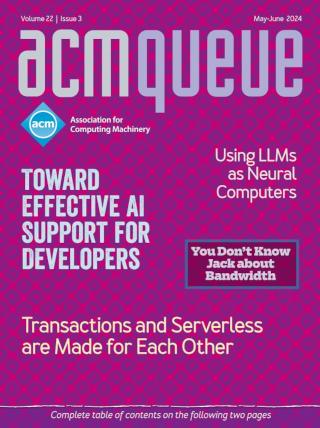
How to Create a Great Team Culture (and Why It Matters):
Build safety, share vulnerability, establish purpose.
As leader of the team, you have significant influence over your team’s culture. You can institute policies and procedures that help make your team happy and productive, monitor team successes, and continually improve the team. Another important part of team culture, however, is helping people feel they are a part of creating it. How can you expand the job of creating a culture to other team members?
Garbage Collection as a Joint Venture:
A collaborative approach to reclaiming memory in heterogeneous software systems
Cross-component tracing is a way to solve the problem of reference cycles across component boundaries. This problem appears as soon as components can form arbitrary object graphs with nontrivial ownership across API boundaries. An incremental version of CCT is implemented in V8 and Blink, enabling effective and efficient reclamation of memory in a safe manner.
Troubling Trends in Machine Learning Scholarship:
Some ML papers suffer from flaws that could mislead the public and stymie future research.
Flawed scholarship threatens to mislead the public and stymie future research by compromising ML’s intellectual foundations. Indeed, many of these problems have recurred cyclically throughout the history of AI and, more broadly, in scientific research. In 1976, Drew McDermott chastised the AI community for abandoning self-discipline, warning prophetically that "if we can’t criticize ourselves, someone else will save us the trouble." The current strength of machine learning owes to a large body of rigorous research to date, both theoretical and empirical. By promoting clear scientific thinking and communication, our community can sustain the trust and investment it currently enjoys.
The Worst Idea of All Time:
Revelations at 100!
In February 2004, with the other members of the Queue editorial board, I was at our monthly in-person dinner meeting, where we gather to come up with interesting discussion topics that will result in practitioner-oriented articles (and the best authors to write them) for publication in Queue. It was only our second year in business, and although we had published some successful and widely read articles, Queue still had no regular columnists. I was initially invited to board meetings by another editorial board member, Eric Allman, and had written a couple of articles for the publication. I was also co-authoring my first book but had never been a columnist. Although the concept seemed appealing at the time, perhaps due to too much wine with dinner, I was at a loss on how to actually make it work.
Net Neutrality: Unexpected Solution to Blockchain Scaling:
Cloud-delivery networks could dramatically improve blockchains’ scalability, but clouds must be provably neutral first.
Provably neutral clouds are undoubtedly a viable solution to blockchain scaling. By optimizing the transport layer, not only can the throughput be fundamentally scaled up, but the latency could be dramatically reduced. Indeed, the latency distribution in today’s data centers is already biased toward microsecond timescales for most of the flows, with millisecond timescales residing only at the tail of the distribution. There is no reason why a BDN point of presence would not be able to achieve a similar performance. Adding dedicated optical infrastructure among such BDN points of presence would further alleviate throughput and reduce latency, creating the backbone of an advanced BDN. The key to this vision, however, lies in establishing trust by the blockchain ecosystem into the underlying networking infrastructure. This, in turn, is achieved by decoupling authority from infrastructure via a provably neutral network design.
Tom’s Top Ten Things Executives Should Know About Software:
Software acumen is the new norm.
Software is eating the world. To do their jobs well, executives and managers outside of technology will benefit from understanding some fundamentals of software and the software-delivery process.
Online Event Processing:
Achieving consistency where distributed transactions have failed
Support for distributed transactions across heterogeneous storage technologies is either nonexistent or suffers from poor operational and performance characteristics. In contrast, OLEP is increasingly used to provide good performance and strong consistency guarantees in such settings. In data systems it is very common for logs to be used as internal implementation details. The OLEP approach is different: it uses event logs, rather than transactions, as the primary application programming model for data management. Traditional databases are still used, but their writes come from a log rather than directly from the application. The use of OLEP is not simply pragmatism on the part of developers, but rather it offers a number of advantages. Consequently, OLEP is expected to be increasingly used to provide strong consistency in large-scale systems that use heterogeneous storage technologies.
SageDB and NetAccel:
Learned models within the database system; network-accelerated query processing
The CIDR (Conference on Innovative Data Systems Research) runs once every two years, and luckily for us 2019 is one of those years. I’ve selected two papers from this year’s conference that highlight bold and exciting directions for data systems.





